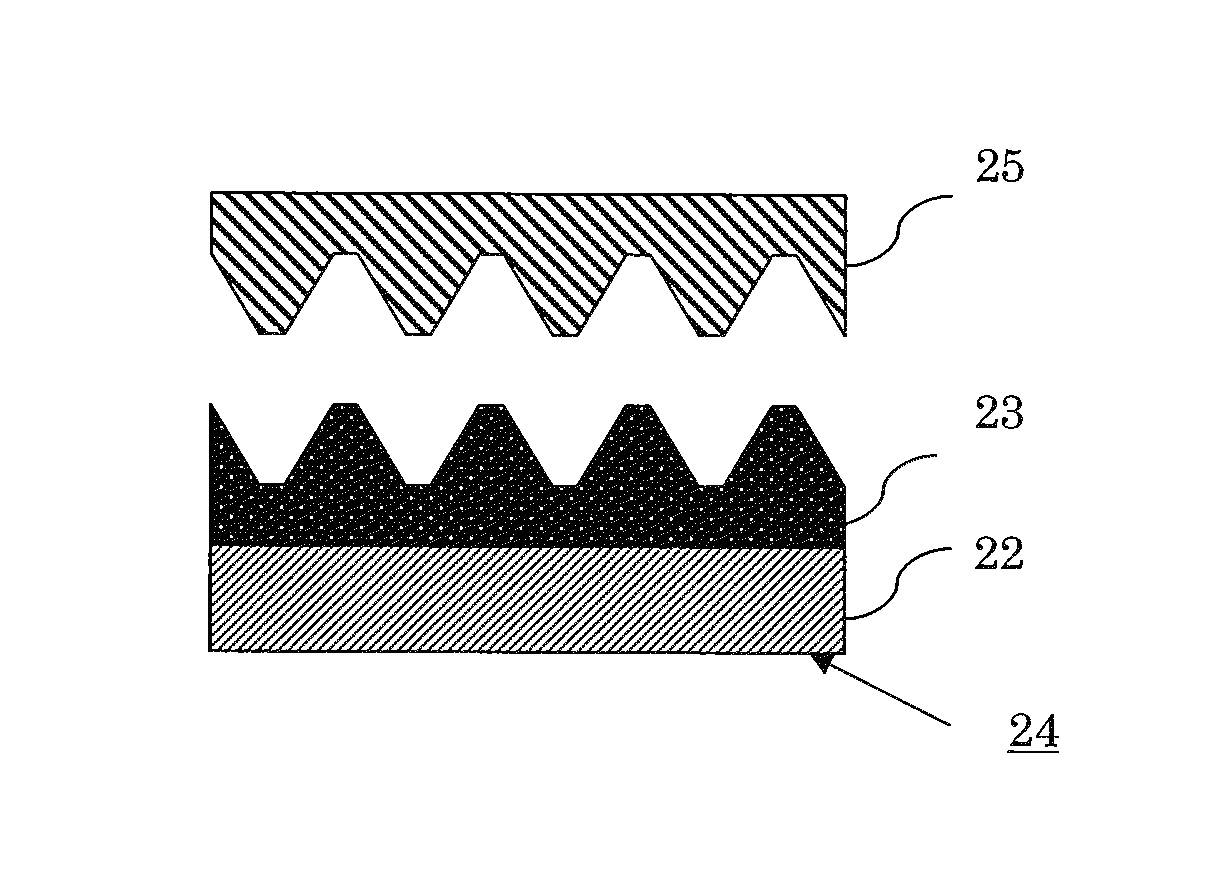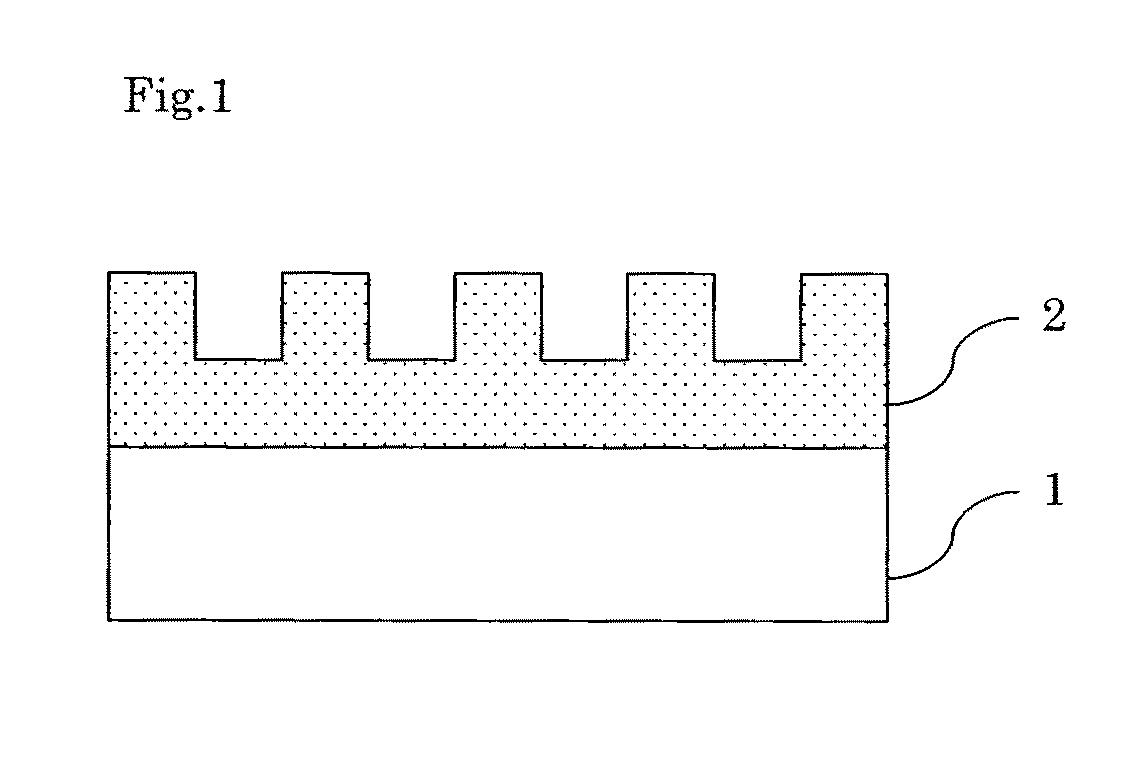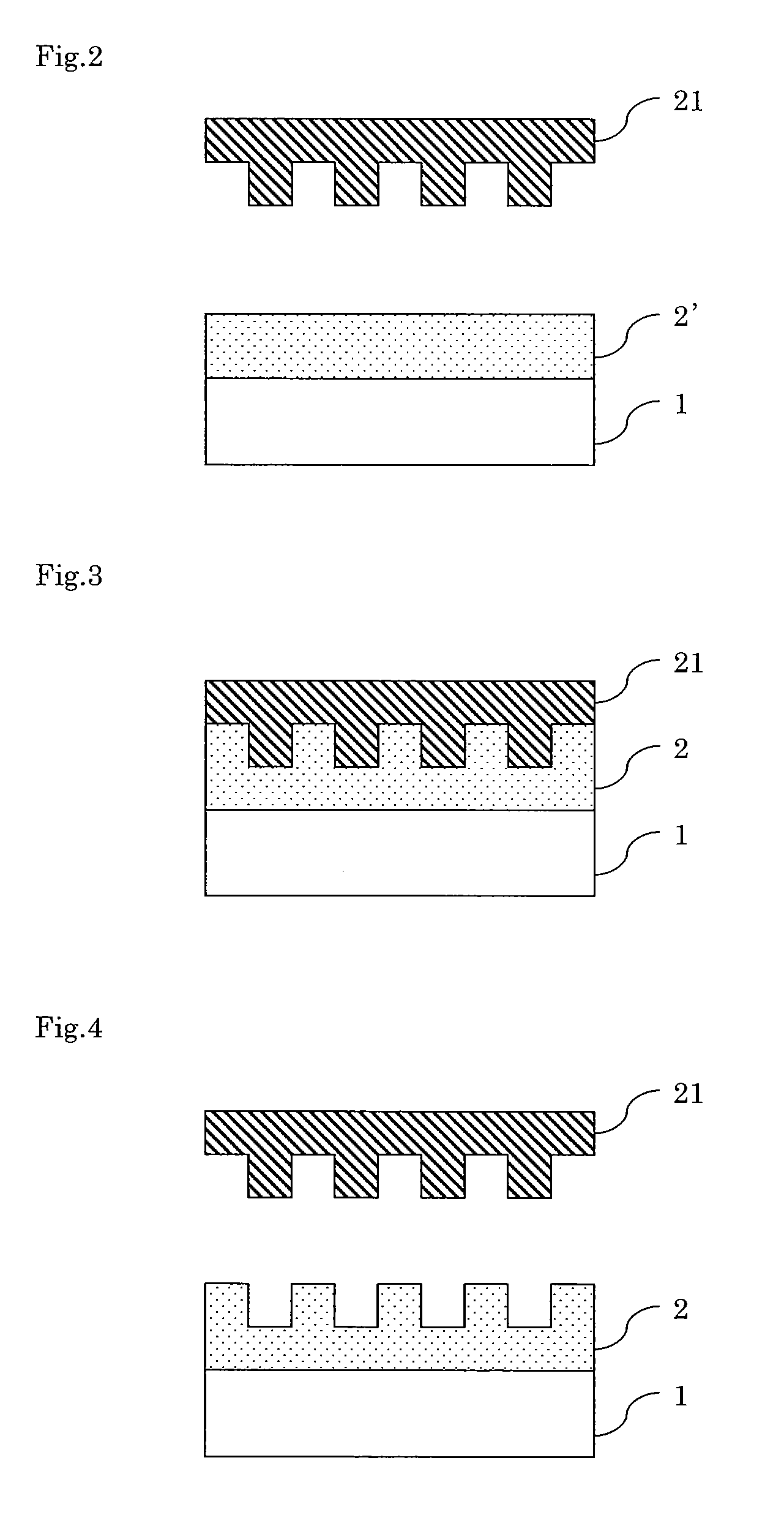Diffraction grating, organic EL element using the same, and manufacturing methods thereof
a technology of organic el elements and gratings, applied in the direction of optical elements, instruments, other domestic objects, etc., can solve the problems of insufficient performance of organic el elements and difficult white light emission, and achieve the effect of low wavelength dependence and low directivity
- Summary
- Abstract
- Description
- Claims
- Application Information
AI Technical Summary
Benefits of technology
Problems solved by technology
Method used
Image
Examples
fabrication example 1
[0319]First, a silicone-based polymer [a resin composition of a mixture of 90% by mass of a silicone rubber (manufactured by Wacker Chemie AG under the product name of “Elastosil RT601”) and 10% by mass of a curing agent] was applied onto a base member (material: glass, size: 20 mm×12 mm) by a spin coating method, and cured by being heated at 100° C. for 1 hour. Thus, a silicone-based polymer film was formed.
[0320]Next, an aluminum vapor-deposition film (thickness: 10 nm) was formed on the silicone-based polymer film by a vapor deposition method under conditions of a temperature of 100° C. and a pressure of 1×10−3 Pa. Then, after cooling to room temperature (25° C.) over a period of 30 minutes, the pressure was returned to the atmospheric pressure (1.013×105 Pa). Consequently, concavities and convexities were formed on a surface of the aluminum vapor-deposition film formed on the silicone-based polymer film. Subsequently, a silicone-based polymer [a resin composition of a mixture of...
fabrication example 2
[0322]First, an azobenzene polymer was applied in a film thickness of 0.8 μm onto a base member (material: glass, size: 15 mm×12 mm) by a spin coating method. Thus, an azobenzene polymer film was formed. Then, argon laser light was diffracted with a surface relief-type diffraction grating, and the surface of the azobenzene polymer film was irradiated with the diffracted light. Next, the diffraction grating was rotated by 120°, then laser light was diffracted, and the azobenzene polymer film was irradiated with the diffracted light. Subsequently, the diffraction grating was further rotated by 120°, then laser light was diffracted, and the azobenzene polymer film was irradiated with the diffracted light. Thus, concavities and convexities were formed on the surface of the azobenzene polymer film in a periodic arrangement.
[0323]Next, a silicone rubber (manufactured by Wacker Chemie AG under the product name of “Elastosil RT601”) was applied onto the azobenzene polymer film by a dropping...
example 1
[0324](i) Fabrication of Diffraction Grating
[0325]A glass substrate 1 (manufactured by Matsunami Glass Ind., Ltd. under the product name of “Micro slide glass”) and a curable resin 2′ (manufactured by Norland Optical Adhesive under the product name of “NOA 61”) were prepared. Then, the curable resin 2′ was applied onto the glass substrate 1. Thereafter, the curable resin 2′ was cured by irradiation with ultraviolet rays for 1 hour, with Master Block (M-3B) obtained in Fabrication Example 1 being pressed thereto (see FIGS. 2 and 3). Then, Master Block (M-3B) was detached from the cured resin layer 2, and thereby the cured resin layer 2 having concavities and convexities formed thereon was formed on the glass substrate 1. Thus, a diffraction grating was obtained (see FIG. 4).
[0326]A concavity and convexity analysis image was obtained by analyzing the shape of the concavities and convexities formed on the surface of the cured resin layer in the obtained diffraction grating by use of an...
PUM
 Login to View More
Login to View More Abstract
Description
Claims
Application Information
 Login to View More
Login to View More - R&D
- Intellectual Property
- Life Sciences
- Materials
- Tech Scout
- Unparalleled Data Quality
- Higher Quality Content
- 60% Fewer Hallucinations
Browse by: Latest US Patents, China's latest patents, Technical Efficacy Thesaurus, Application Domain, Technology Topic, Popular Technical Reports.
© 2025 PatSnap. All rights reserved.Legal|Privacy policy|Modern Slavery Act Transparency Statement|Sitemap|About US| Contact US: help@patsnap.com



